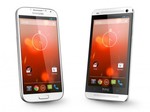Huawei P40 Pro+ Review - Android
When Huawei launched the P40 series, only the P40 and P40 Pro were initially offered in the Philippines, which left some people asking when...
The post Huawei P40 Pro+ Review appeared first on YugaTech | Philippines Tech News & Reviews.
When Huawei launched the P40 series, only the P40 and P40 Pro were initially offered in the Philippines, which left some people asking when the P40 Pro+ will arrive. A few months later, we finally have an answer as the company is launching its most powerful flagship in the country. What can we expect from Huawei’s current cream of the crop? Find out in our review.

Design and Construction
Right off the bat, we’ll tell you that the P40 Pro and P40 Pro+ are twins, meaning they have the same design and dimensions. However, they’re not identical, and one of the ways to distinguish the two is from the colors. While the P40 Pro is available in Silver Frost, Blush Gold, Deep Sea Blue, Ice White, and Black, the P40 Pro+ is only available in two colors: White Ceramic and Black Ceramic.

The P40 Pro+ is also a bit heftier than the P40 Pro. The former is 226g while the latter is 209g. And it’s something you’d feel upon holding the device. Most of the weight is also noticed around the top end, which can be attributed to the large camera module.

Still, it looks and feels premium, thanks to the nano-tech ceramic at the back. It’s polished and smooth. Add to that the metal frame that blends well with the 3D curves of the front and back panel. It’s still a fingerprint and smudge magnet, though, so better use a case.

Ports and button placements are still in the same spot as the P40 Pro. We have the volume and the power/lock buttons on the right, which are firm yet clicky. They’re also reachable, but the top volume button could be quite a reach if you have small hands. You might have to readjust your grip now and then for that.

The IR blaster and the secondary microphone are found on top, along with the antenna bands which are present on all sides.

Then down at the bottom are the SIM tray that can accommodate two nano-SIM cards, or a single SIM card and a Huawei Nano Memory card. Also found here are the primary microphone, USB Type-C port, and the loudspeaker.

Flip it on its back, and you will see this large, rectangular camera module that houses the five cameras and dual-LED flash. It’s protruding, so it wobbles if you lay it on a flat surface without a case. The P40 Pro+ also has an IP68-rating, meaning it is dust and water-resistant, so you can worry less about accidental splashes or dropping it in a pool.
Display and Multimedia
The P40 Pro+, like the P40 Pro, also sports a 6.58-inch Flex OLED Quad-Curve Overflow display with Full HD+ (2640 x 1200) resolution. Under it is the in-display fingerprint scanner. It’s an immersive screen that curves towards the corners and edges. It also has support for DCI P3 Color Space, HDR10+, and a 90Hz refresh rate that translates to smooth animations and transitions. You can toggle the refresh rate to 60Hz if you want to save power. This kind of configuration can provide a great viewing experience with excellent details, vibrant colors, and deep blacks.

However, not everyone will be fond of the large hole-punch, (or cutout, as Huawei calls it) on the upper left corner, which houses the 32MP front-facing camera, ToF sensor, and IR flood illuminator. You can hide the hole-punch by going to the settings and toggling ‘Hide cutout.’ It works well, but you’ll end up with a screen that looks like it has a huge forehead.
As for audio, the P40 Pro+ only has a single down-firing speaker, which is a bit of a downer considering that some flagship devices offer dual speakers. Still, the audio quality is excellent and loud enough for casual use. There’s no 3.5mm audio jack, so you’ll have to use USB-C wired interface or go wireless instead.
Camera
The P40 Pro+ has five rear cameras consisting of a 50MP F1.9 primary, 40MP F1.8 ultra-wide, 8MP F4.4 long-range 10x optical zoom, 8MP F2.4 mid-range 3x optical zoom, and a ToF camera. Compared to the P40 Pro, this device has a more powerful zoom range.

Features include Aperture, Night, Portrait, Pro, Slo-mo, Panorama, Monochrome, AR LEns, Light Painting, Dual-View, and Time-Lapse, to name a few. There’s also AI Les to identify objects and landmarks, and Master AI to automatically detect the scene and apply appropriate tweaks.

As expected, camera performance is great and can be considered as one of the best camera smartphones right now. As always, this is seen in just how crisp and clear images come out, no matter which of the cameras you use. The colors are far from natural, as Huawei’s camera software tends to boost the saturation quite a bit. With a few exceptions like with green plants and a blue sky, it’s not overwhelmingly unnatural. Dynamic range is also pretty solid, which is evident when taking shots of bright subjects — you can still see the detail in white objects.
Talking about selfies, in particular, we get much of the same attributes as mentioned previously, with the exception of the boosted saturation. In this case, it’s a good thing that the colors aren’t too cranked up, which yields accurate skin tones.
When it comes to video recording, it can shoot up to 4K video at 60fps and can burst an ultra slow-motion shot up to 960fps at 1080p. Watch the sample below:
OS, UI, and Apps
Running the software is EMUI 10.1 based on Android 10. Like the P40 and P40 Pro, the P40 Pro+ doesn’t have GMS and uses HMS instead. Although you don’t have Google Play Store, it has AppGallery that already houses some of the most popular apps in the market. Side-loaded apps are also supported, and we were able to download and run our favorite apps like Facebook and Netflix flawlessly.

As for features, the EMUI 10.1 offers Dark Mode, an optimizer, Phone Clone, Huawei Share, Find My Phone, PrivateSpace, Digital Balance, AR Measure, and the Huawei Assistant called Celia. However, it looks like it’s yet to be activated.

As for pre-installed apps, the good news is there’s not a lot. What you will find, though, is plenty of recommendations. There’s a dedicated folder for Business, Entertainment, Social, Lifestyle, and Games. Tap on any of these, and it will give you a pop-up for the installation. If you don’t need them, you can delete them one-by-one.

Storage-wise, it has a 512GB capacity with 490GB as usable. You can expand the storage capacity but using Huawei’s NM card and not your usual microSD.
Performance and Benchmarks
Powering the P40 Pro+ is the Kirin 990 5G octa-core CPU clocked at 2.86GHz, Mali-G76 GPU, and 8GB of RAM. You can already expect top-notch performance with this kind of hardware configuration. Everything is just smooth and snappy, from navigating the UI to installing and launching apps. It can also take on demanding tasks such as gaming and photography and videography. Expect some warming though in the area beside the camera module, but it doesn’t get too hot to make you worry. While benchmarking in Performance mode, we see the temperature peak at 42-C.

Speaking of benchmarks, check out the scores below in Performance mode:
• AnTuTu V8 – 528,674
• Geekbench – 775 (Single-Core), 3,152 (Multi-Core), 4,962 (OpenCL)
• 3DMark SSE – 6,024 (OpenGL ES 3.1), 5,610 (Vulkan)
• PCMark – 11,416 (Work 2.0)
• AndroBench – 1,782.87 MB/s (Seq. Read), 973.28 MB/s (Seq. Write)
Battery Life
Providing juice to the P40 Pro+ is a 4,200mAh battery, the same capacity found on the P40 Pro. It was able to last a whole day of heavy use which includes moderate gaming and heavy photography, but the experience may vary depending on usage. But in our video loop test which involves playing a video file on loop in Airplane mode at 50% brightness and volume, we got over 24 hours of playback, which is good.
When it comes to charging, it supports the 40W wired SuperCharge which can replenish an empty battery in just 1 hour and 15 minutes. It also supports 40W Wireless SuperCharge and Wireless Reverse Charge.
Conclusion
The Huawei P40 Pro is already a powerful device on its own, and for most users, it’s already enough. But Huawei wants to take the experience up a notch higher, and this is where the P40 Pro+ comes in. Aside from the large and immersive 6.58-inch display with 90Hz display, Kirin 990 5G, 5G connectivity, 8GB of RAM, and 4,200mAh battery are not enough, you’ll also get up to 512GB of storage, 40W fast wireless charging, exclusive ceramic finish, and penta rear cameras with impressive zoom capabilities.

This device is for those who have bigger demands and want the best of the best. It comes with a heftier price tag though (Huawei is yet to reveal the price, as of writing), but if you can afford it, good. But if you have a lower budget, and don’t need the ‘+’ features, the P40 Pro should be just fine.
Huawei P40 Pro+ specs:
6.58-inch FHD+ (2640 x 1200) Flex OLED Quad-Curve Overflow Display, 90Hz
HiSilicon Kirin 990 5G 2.86GHz octa-core CPU
Mali-G76 GPU
8GB RAM
256GB, 512GB storage
NM card support, up to 256GB
Penta-rear cameras:
* 50MP Ultra Vision Camera, F1.9 (main – photo, OIS, Octa PD AF)
* 40MP SuperSensing Cine Cameram F1.8 (ultra-wide)
* 8MP SuperZoom Camera F4.4 (Periscope telephoto, 10x long-range optical zoom, 20X hybrid zoom, 100X digital zoom, OIS)
* 8MP Telephoto Camera F2.4 (telephoto, 3x mid-range optical zoom, OIS)
* ToF camera
32MP AF F2.2 front camera + IR Depth/Gesture Camera
Dual-SIM
Single-SIM + e-SIM (for select models)
5G, 4G LTE
WiFi 6 Plus
Bluetooth 5.1
NFC
GPS, A-GPS, GLONASS, GALILEO, QZSS
Fingerprint scanner (in-display)
IR Face Unlock
IP68-certification
USB Type-C
IR Blaster
EMUI 10.1 (Android 10) w/ AppGallery
4,200mAh battery w/ 40W Fast Charging, 40W Wireless SuperCharge, Wireless Reverse Charge
158.2 x 72.6 x 8.95 mm
203 grams
Ceramic White, Ceramic Black
The post Huawei P40 Pro+ Review appeared first on YugaTech | Philippines Tech News & Reviews.
22/06/2020 01:04 PM
Select Lenovo devices now come with 3-Year Premium Care service
22/06/2020 11:59 AM
OPPO Philippines Launches the OPPO A92
22/06/2020 10:29 AM
Budget handset Samsung Galaxy A11 priced in the Philippines
22/06/2020 09:53 AM
Realme C11 to come with a fresh design, 5000mAh battery
22/06/2020 03:15 AM
Realme Malaysia teases C11, world’s first MediaTek’s G35 based smartphone
22/06/2020 09:08 AM
Kaspersky’s take on the new FaceApp challenge and some useful tips
22/06/2020 04:39 PM
Streaming Apps For Asian Movies and TV Series
22/06/2020 09:30 AM
Matteo Guidicelli’s PlayStation 4 Pro unboxing triggers netizens
22/06/2020 10:55 AM
- HEALTH
- Comics
- Libraries & Demo
- Sports Games
- Racing
- Photography
- Transportation
- Media & Video
- Sports
- Health & Fitness
- Weather
- Medical
- Cards & Casino
- Arcade & Action
- Personalization
- Social
- Communication
- Productivity
- Casual
- Shopping
- Tools
- Brain & Puzzle
- Business
- News & Magazines
- Finance
- Lifestyle
- Music & Audio
- Entertainment
- Travel & Local
- Books & Reference
- Education








